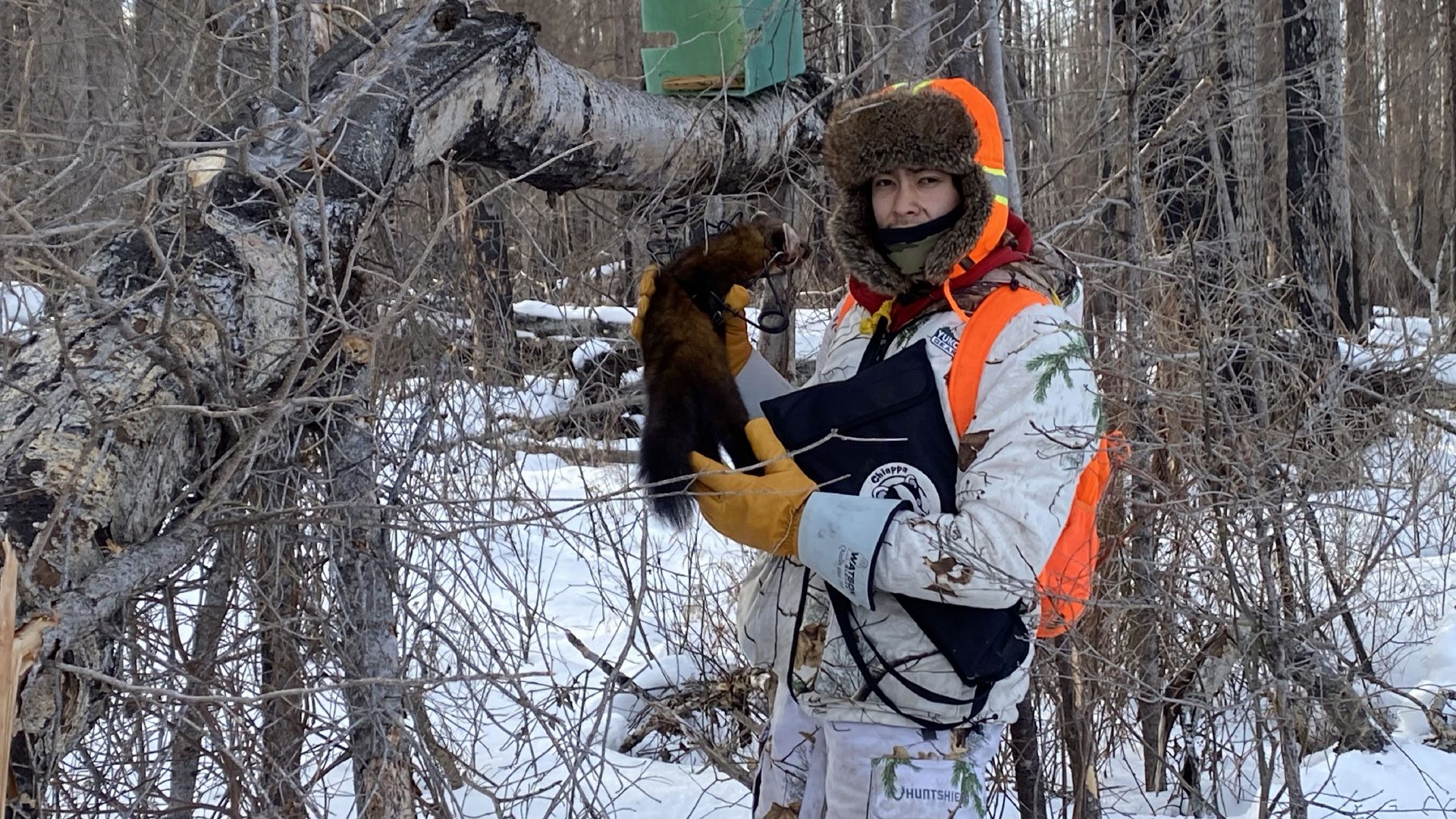Seth Auger hangs a wolf and carefully makes the cuts needed to harvest its fur.
This is the second wolf that he’s been able to catch as a certified junior trapper.
As he works away, six young people watch in hopes of one day being in his shoes.
“I’m still learning,” said 18-year-old Auger, who will one day take over his Mooshum’s trapline.
“Once I have the money, I’ll go get some traps and start trapping some marten, some beavers.”

As trapping season comes to an end in Wabasca, Alta., Auger joins the other youth in a three-day trapping camp funded by Alberta Health Service’s, Honouring Life.
It means a weekend on the land, full of snowmobiling, setting, and checking traps and hosted by seasoned trapper Bobby Beaver.
“We’re trying to get as many youths back on the land, not only for trapping but to practice our inherent rights,” Beaver told APTN News right before holding a demonstration on skinning a lynx.
“There are so many youths that are lost in their ways right now. One of the best ways is to connect with the land. For me, that’s my happy place.”
But to become certified like Auger and Beaver, the youth have to take a course through the Alberta Trappers Education Program.
It became mandatory in 2014 to ensure furs are harvested using humane trapping methods.
Beaver is an instructor and a representative of the Treaty 8 Trappers’ Association, which gets Indigenous youth involved in trapping. He said the camp gives an idea of what the certification course looks like.
“If you have enough years of experience, then you can take over your family trapline,” he said.

Keeping the trapline in the family is the goal Alanis Yellowknee and Chevy Young hope to reach.
“If I do, I’ll be able to put my name as the junior on my grandpa’s trapline,” said Young
“Well right now it’s just my Mooshum and my dad then it would be me,” Yellowknee added. “It kind of keeps the trapline in the family and if someone wants to take it, well they can’t because there’s another generation that’s going to come up and take it over”
Both have already signed up for the program.
According to the Alberta Government, If an Indigenous-owned trapline is not being used, the province would work with the affiliated nation to find a new owner.
“It’s all about new traps, new regulations that we have to follow,” Beaver said, adding he couldn’t let the youth handle any of the traps.
“I agree with that because we respect the animals we trap; we respect the land, and the humane way is the only way to go.”










